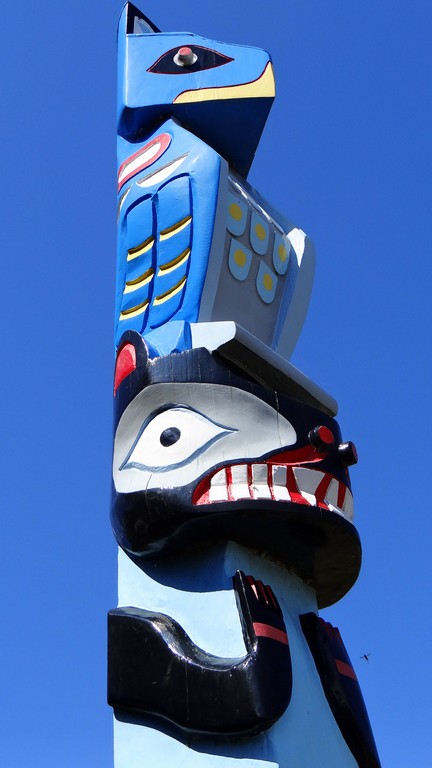
About a mile from Semiahmoo Cannery is the Semiahmoo Cannery Museum. Easily identified by a totem sitting in front of twin buildings. The museum is run by volunteers and asks for donations. The second building most likely supports it by rents from weddings and other affairs.

The bride smiled sweetly when I took her picture. There was also a bride at the cannery, but I was unable to get her picture. Suffice it to say, both parking areas were very full and busy on Saturday. But, brides are always good luck. What a happy time for them.
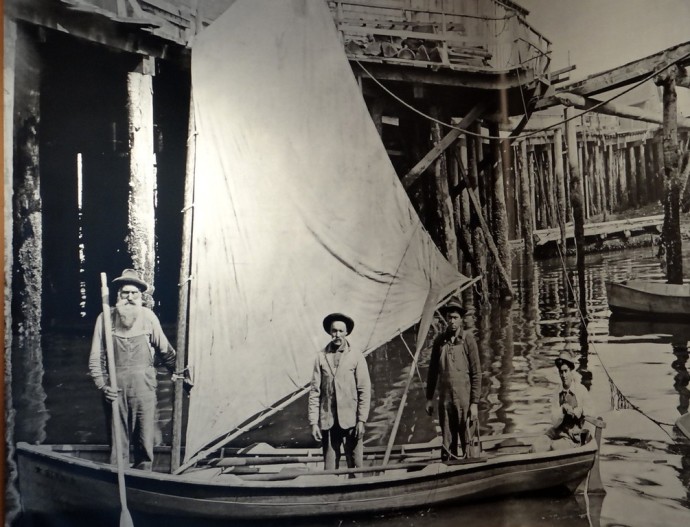
It started with fleets of small boats, netting salmon during the run and hauling their catch to the cannery.
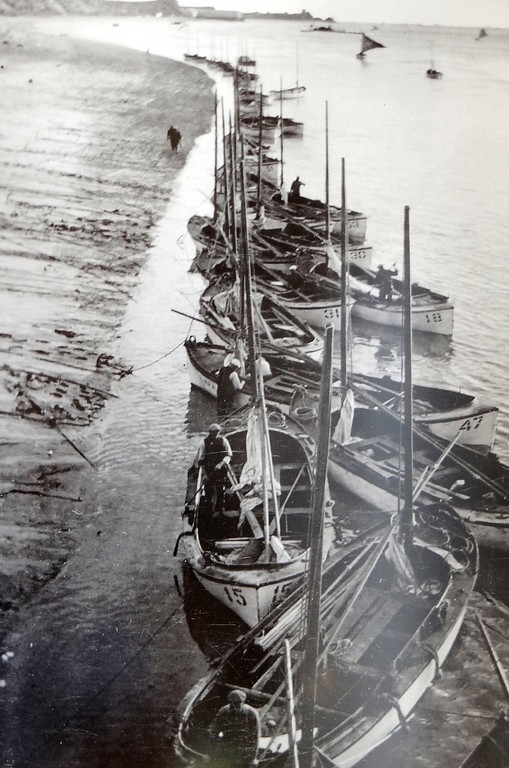
Every day, these guys would go out and load their boats with fish maybe two or three times in one day. They’d bring in enough fish to feed an army.
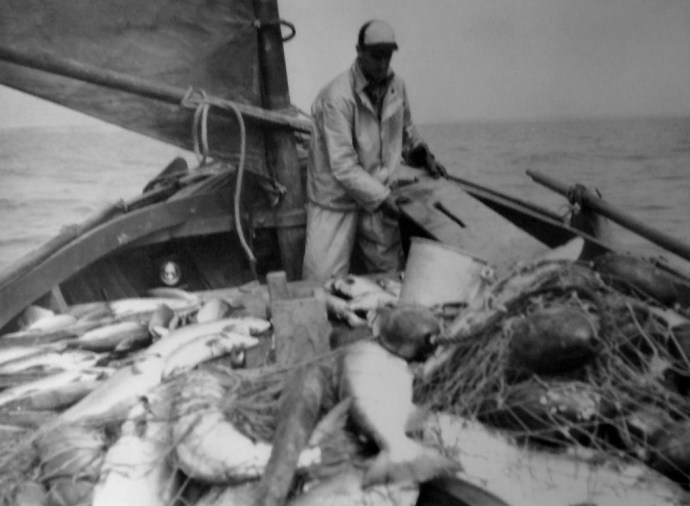
They would net enough fish to actually fill the boat, and look at the size of the salmon then. Not a small one in the net.

Salmon became the biggest West Coast Industry along with logging and big companies stepped in to reap the bounty. Fleets of company boats went out salmon fishing everyday instead of individually owned boats.
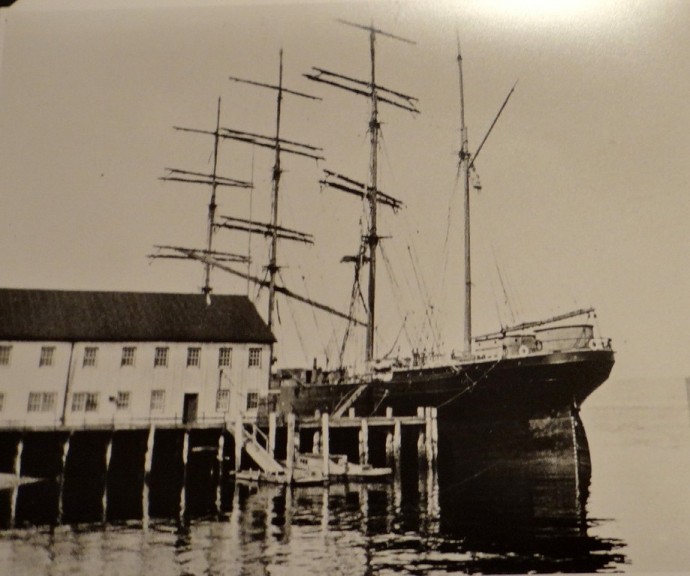
There was a cannery on every river from the Pacific Northwest to Alaska, 50 of them. They all knew each other an competed. Only one, at Dillingham, Alaska is still in operation. There are new ones, but not the old canneries from the 1900’s. Most are gone. The boats, went to huge wooden sailing ships, like the one above, then steel sailing ships, to motorized ships. It became very big business indeed and is still a corporate operation today.
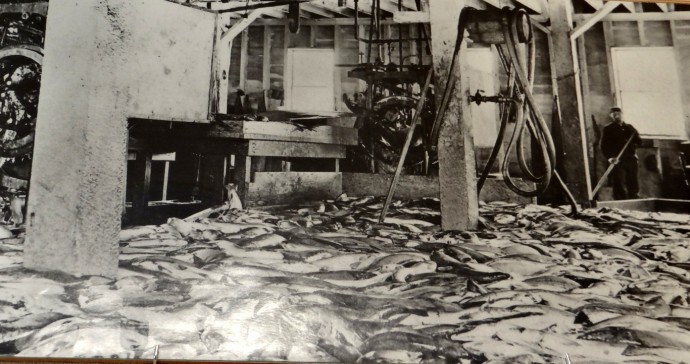
The real dirty work of cleaning fish by hand, and loading cans and boxes of fish for market demand, was done mostly by about 30,000 Chinese workers imported to do a dirty and dangerous job. Some had boats and fished for themselves but they were not welcome to compete on the water. Always industrious, they still managed to send money to their families in China, considering it was a short, seasonal job.
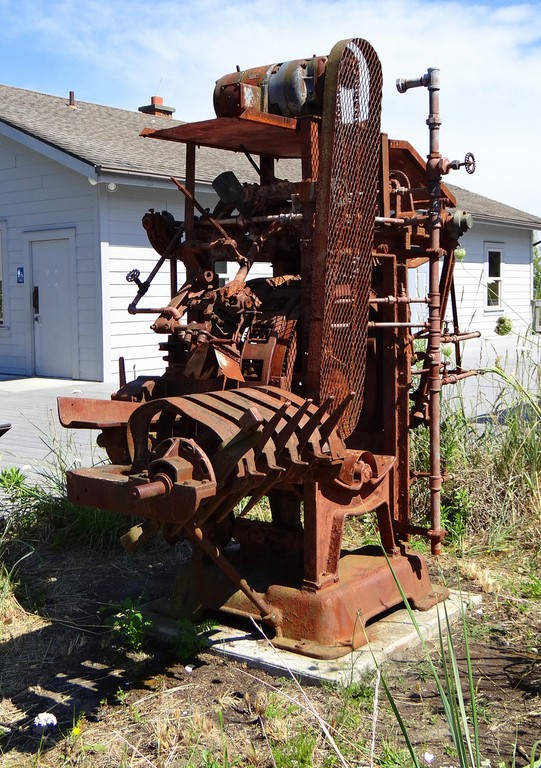
All that changed with the invention of the Iron Chink, patented with that racially charged name by Edmond Smith of Seattle in 1905. It revolutionized the canning industry. Each of the nine Iron Chinks at Semiahmoo took the place of 15-20 laborers on the fish line. The machine could process more than 100 fish per minute. The industry grew exponentially.
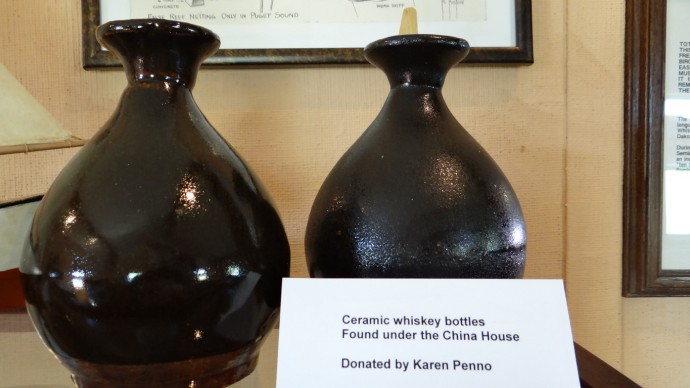
The only reminder of the Chinese contribution to the industry in the museum, the Iron Chink and these two whiskey bottles.
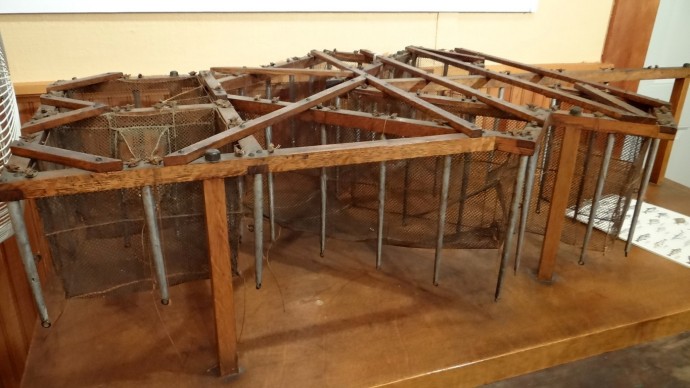
Before the big ships and the big corporations took over the industry, local fishermen decided to fish the way the Indians did, by building fish traps across narrows in the rivers. The take diminished so badly within a couple of years that the traps were outlawed. The Indians fed themselves, they didn’t fish commercially.

The cans were flat, then rounded and fitted with a bottom and rim before being filled with fish and sent through the cookers, and capped.
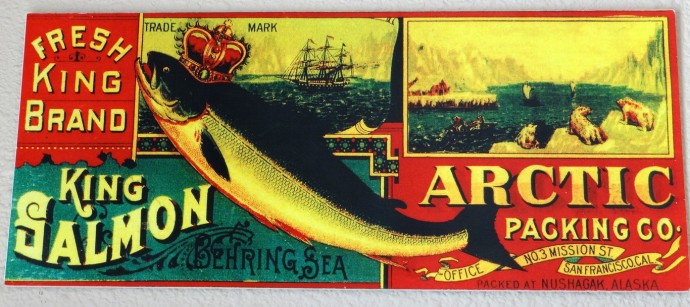
Then they were labeled, packed for shipping and found their way into our pantries.
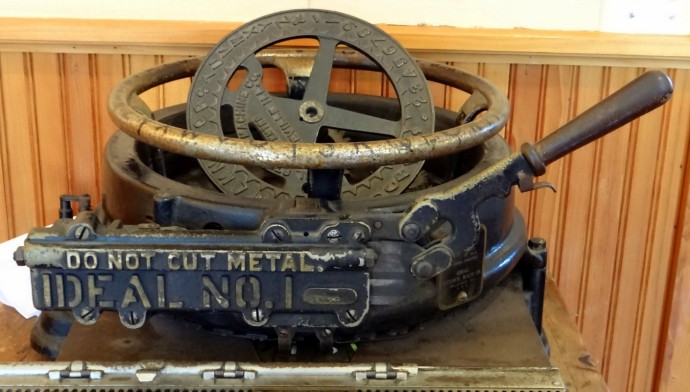
Labeling and building boxes was a side industry of its own. This stencil machine was invented in 1911.
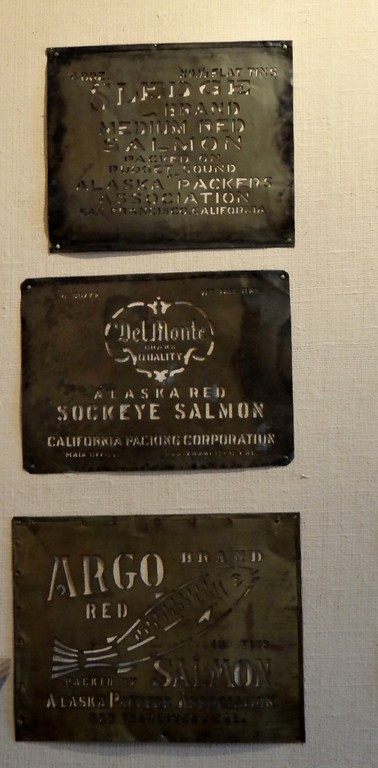
The stencils were metal and used over and over again.
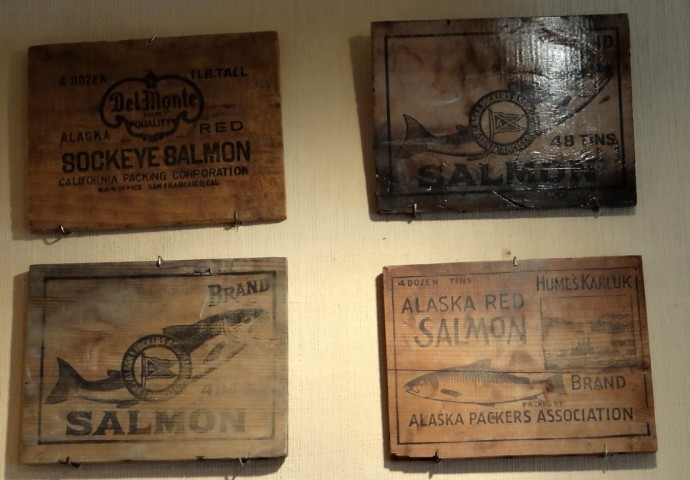
Applied to the ends of the boxes, that held four dozen small cans of salmon, less of the larger cans.
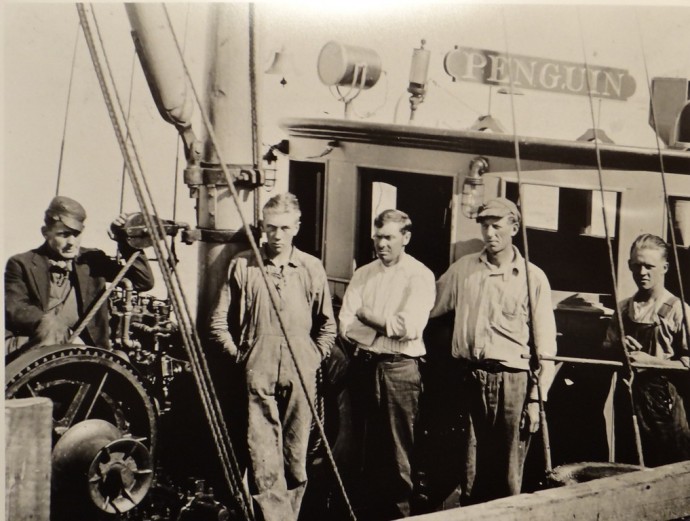
The Penguin was a popular local boat under Captain Thorstenson.
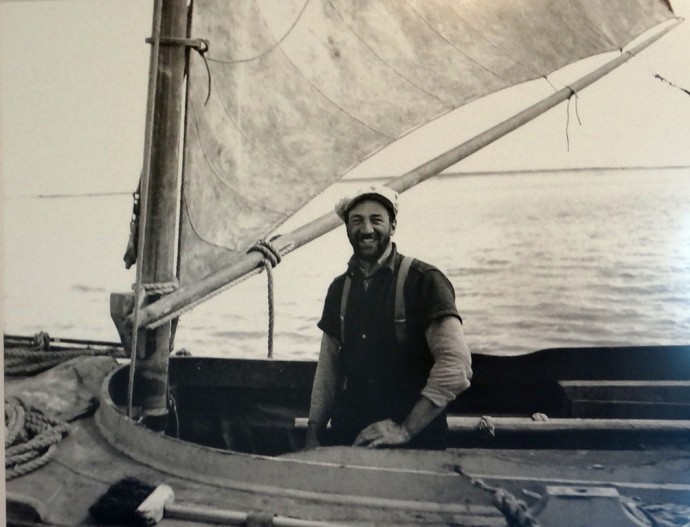
All of the pictures are copies from the museum, showing the industry as it went from one man operations like this one…
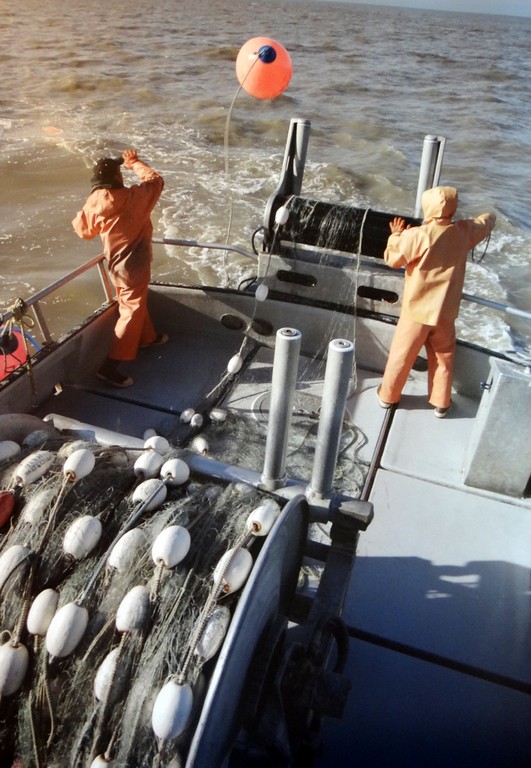
To huge netting operations like this. The museum has a wonderful film that captures the story as it unfolded from the 1880’s to present day. In the film, a woman who worked the office of the cannery said, “If you ask around, even today, you can hardly find anyone who didn’t work the salmon, or had an uncle, father, or grandfather who worked the industry. And they loved it.” This museum is only open during the summer months and we missed it on my first visit here in 2009. It is well worth visiting.
No comments:
Post a Comment